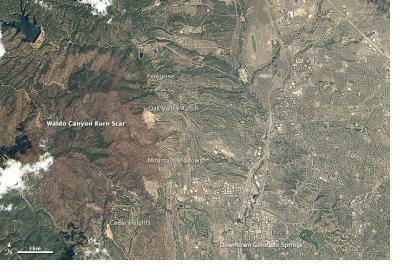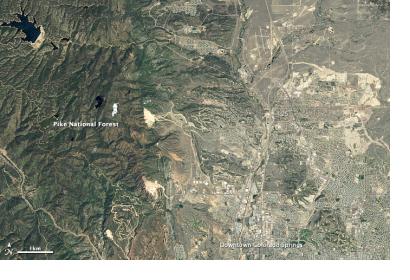Some wildfire experts state that the expansion of communities in Colorado’s Fire Zone during the last decades is an important factor to understand the increasing destruction caused by wildfires of the area. The six most destructive fires in Colorado prior to 2000 destroyed an average of 15 homes, according to the Colorado State Forest Service. However, in the last years Colorado’s wildfires have become increasingly destructive, with the Waldo Canyon fire of 2012 burning down 346 homes.
While climate change and decades of aggressive wildfire suppression have a clear role to play in this escalation, some wildfire experts also call the attention to the continuous development the area has experienced in recent decades. Increasing numbers of Coloradans have moved into the wildland-urban interface (WUI), the wildfire-prone zone where wilderness and civilization meet, bringing more homes, roads, and people into an area that faces the most severe wildfire threat. About a quarter of Colorado Springs residents now live within the wildland-urban interface, explained Christina Randall, the city’s wildfire mitigation administrator. Most of the subdivisions within the WUI were built after the 1980s. Satellite sensors such as the Thematic Mapper and Operational Land Imager on the Landsat series of satellites make visible this expansion of communities into adjacent wildlands.
The city of Mountain Shadows was the first to experience the risks of living along the edge of the forest when in 2012 the Waldo Canyon fire burned down 346 of its homes. The blaze forced more than 30,000 people to evacuate, scorched 18,000 acres (7,000 hectares), killed two people, and took 18 days to control. However, “it’s not vast walls of fire from high-intensity crown fires that destroy homes,” as Tania Schoennagel, a wildfire expert at the University of Colorado-Boulder, explains on NASA's website. Instead, what makes homes ignite is typically the accumulation of small, innocuous-looking embers falling on flammable roofs and porches, as well as blowing into vents. Consequently, simple fire-proofing techniques —such as ensuring that roofs are non-flammable or thinning forested areas around populated areas—can help saving homes, according to Randall.


